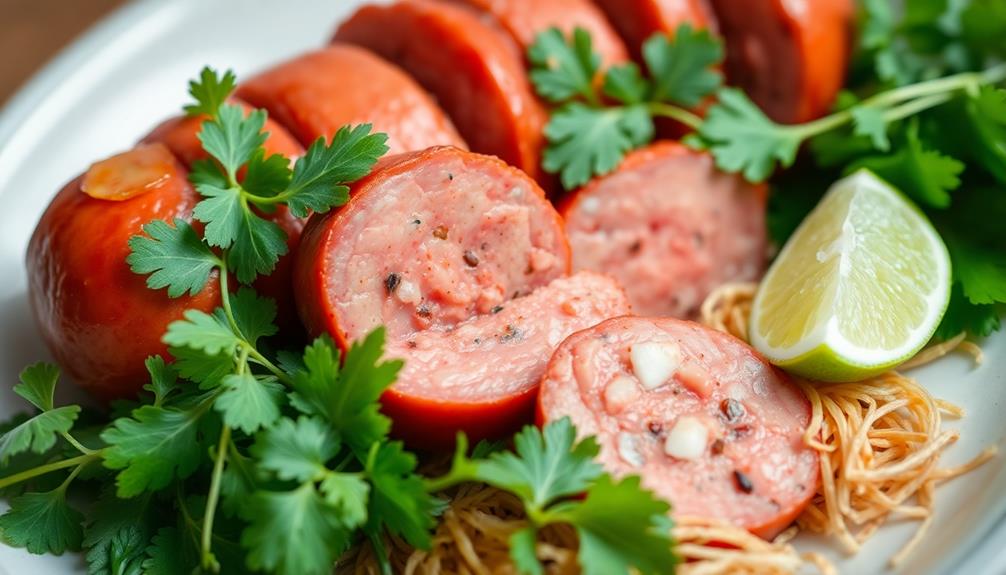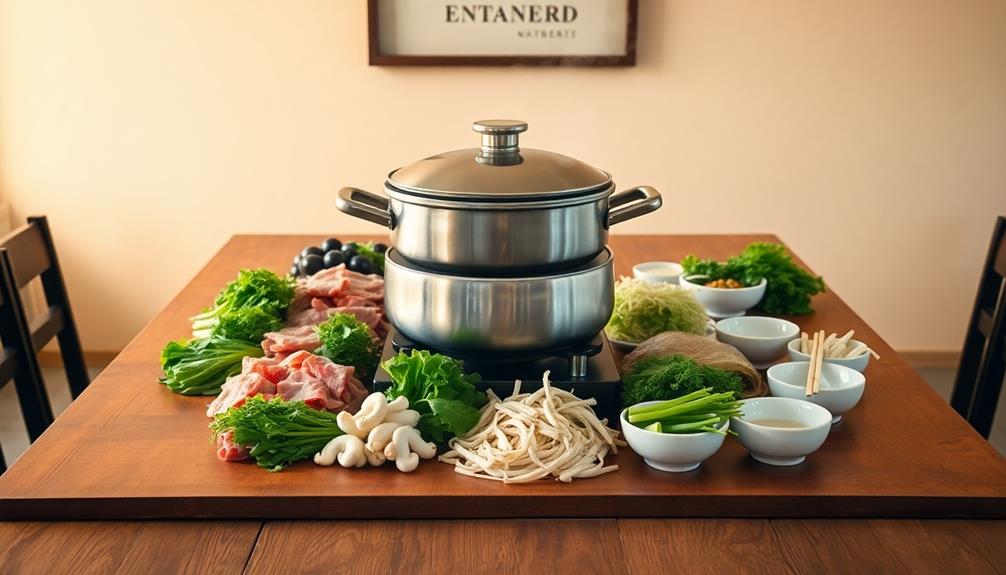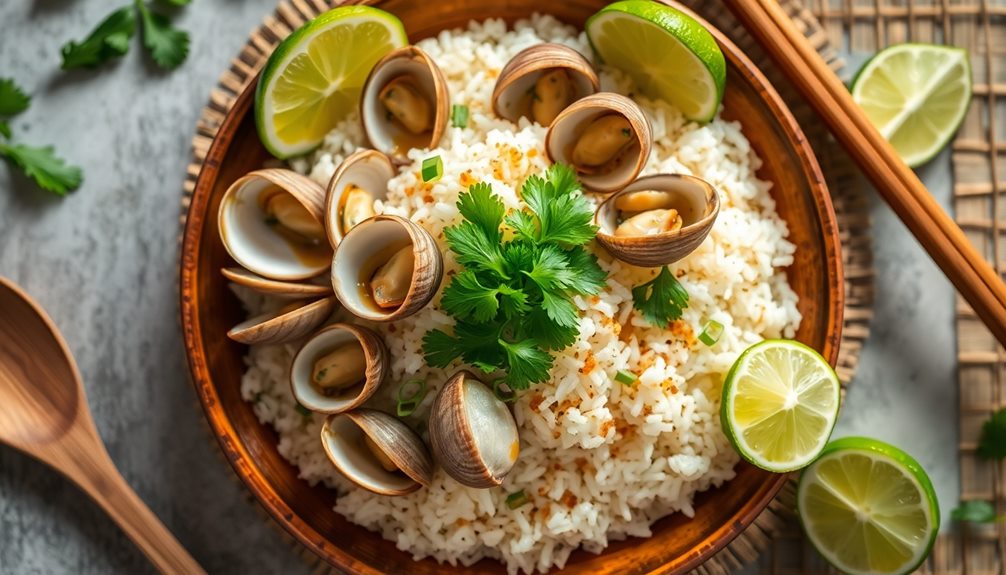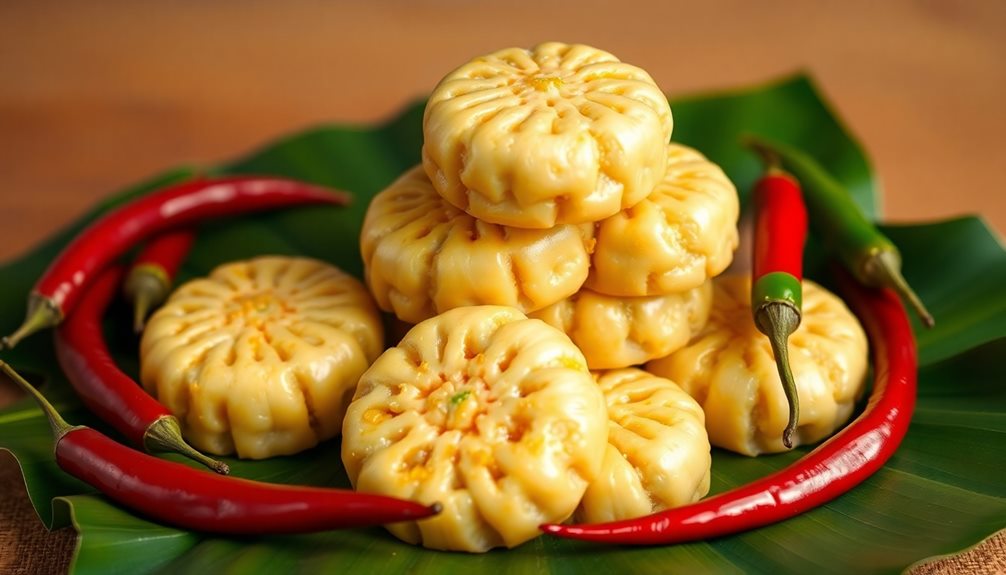Bánh Canh Giò Heo is a beloved Vietnamese thick noodle soup that's been around for centuries. It starts with simmering pork hock in a savory broth, then you'll add chewy rice noodles and sliced jicama for a crunchy contrast. Don't forget the fresh herbs – cilantro, Thai basil, and mint – to really make the flavors pop. With each slurp, you'll be transported to the vibrant streets of Vietnam. Get ready to indulge in this comforting and satisfying dish that's sure to become a new favorite.
Key Takeaways
- Bánh Canh Giò Heo is a traditional Vietnamese noodle soup made with thick rice noodles, tender pork hock, and a savory broth.
- The dish originated in rural Vietnamese communities and has evolved over centuries through trade and cultural exchange.
- Preparing the soup requires soaking dried noodles, simmering pork hock in broth, shredding the meat, and adding jicama and fresh herbs.
- The unique combination of chewy noodles, fall-off-the-bone pork, and vibrant flavors from herbs makes Bánh Canh Giò Heo a beloved comfort food.
- Mastering the balance of noodles, broth, and pork hock is essential to crafting an authentic and delicious Bánh Canh Giò Heo.
History

The origins of Vietnamese thick noodle soup with pork hock can be traced back centuries, to a time when the dish was a staple in the diets of rural Vietnamese communities.
It's believed that the recipe evolved from traditional Chinese noodle soups, which were brought to Vietnam through trade and cultural exchange. Over time, Vietnamese cooks put their own unique spin on the dish, using local ingredients like pork hock, thick rice noodles, and a rich, flavorful broth.
Today, bành canh giò heo remains a beloved comfort food in Vietnam, enjoyed by people across the country.
The thick, chewy noodles and tender pork hock create a satisfying texture, while the broth's blend of savory, slightly sweet, and aromatic flavors warms the soul.
Whether it's served at a bustling street stall or in a family kitchen, this delicious soup continues to be an integral part of Vietnamese culinary heritage.
Cooking Steps
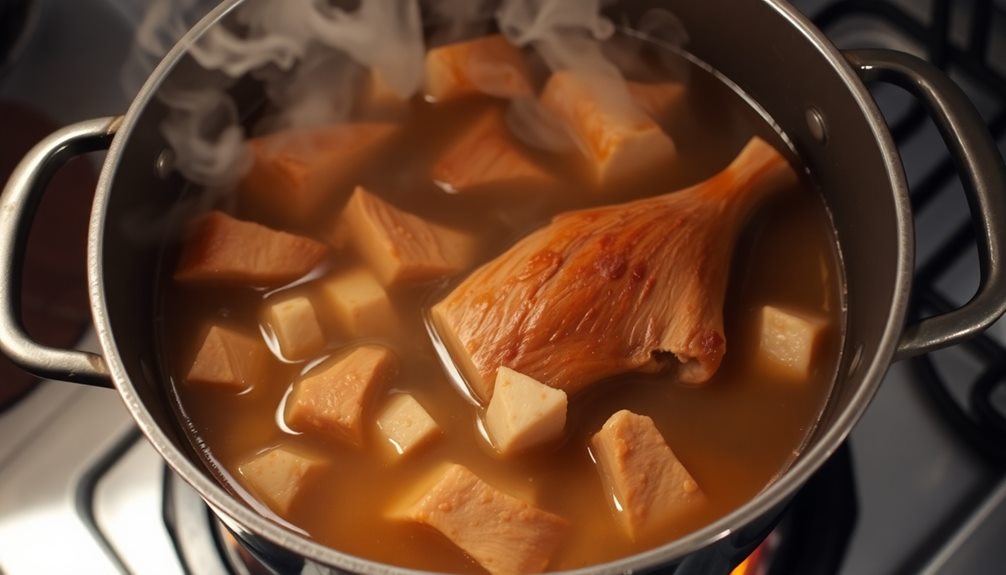
Gather the necessary ingredients and prepare your workstation.
In a large pot, bring the chicken stock to a boil over high heat. Once it's boiling, add the pork hock, ginger, garlic, and salt. Reduce the heat to medium-low and let the pork hock simmer for 1 to 1.5 hours, or until the meat is very tender and falling off the bone.
Carefully remove the pork hock from the pot and shred the meat, discarding the bone. Return the shredded pork to the broth. Add the fish sauce, sugar, and black pepper, then taste and adjust the seasoning as needed. Bring the soup back to a simmer.
In a separate pot, cook the thick rice noodles according to the package instructions. Drain and rinse them under cold water.
To serve, divide the noodles among bowls and ladle the hot broth and pork on top. Garnish with the sliced green onions and cilantro. Enjoy your delicious Vietnamese thick noodle soup!
Step 1. Soak Dried Noodles in Water
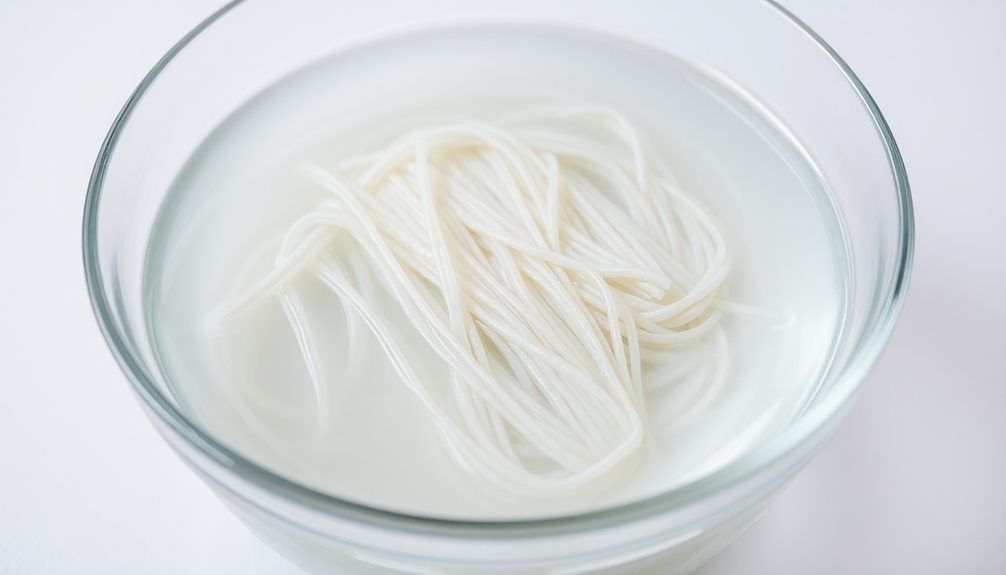
Soak the dried rice noodles in a bowl of water for about 30 minutes. This allows the noodles to soften and become pliable, so they'll be ready to use in your delicious Vietnamese thick noodle soup.
While the noodles are soaking, you can start preparing the other ingredients. After 30 minutes, drain the noodles and rinse them under cool running water. This will remove any excess starch, ensuring your noodles have a nice, firm texture when they're cooked.
Be gentle as you handle the noodles – you don't want to break them. Once they're rinsed, the noodles are ready to be added to the soup broth.
This simple step of soaking the dried noodles is an important part of the process, so don't skip it! With the noodles softened and prepped, you're one step closer to enjoying a steaming bowl of authentic Vietnamese thick noodle soup with pork hock.
Step 2. Boil Pork Hock and Seasonings
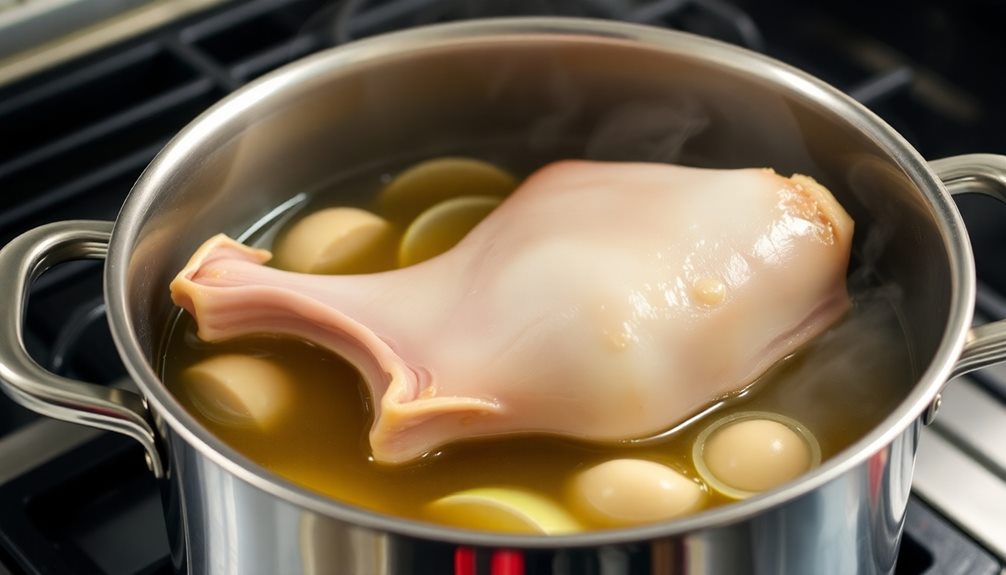
Begin by bringing a large pot of water to a boil over high heat.
Once the water is bubbling, add the pork hock and any desired seasonings, such as garlic, onion, and ginger.
Let the pork hock simmer for about an hour, or until the meat is tender and falling off the bone.
This step infuses the broth with the rich, savory flavors of the pork.
As the pork cooks, the water will gradually transform into a flavorful broth.
Be sure to skim off any foam or impurities that rise to the surface to keep the broth clear and clean.
After the pork has finished cooking, carefully remove it from the pot and set it aside.
The broth is now ready to be used in the next step of the recipe.
This simple yet essential process lays the foundation for the delicious Vietnamese thick noodle soup.
Step 3. Add Sliced Pork Hock
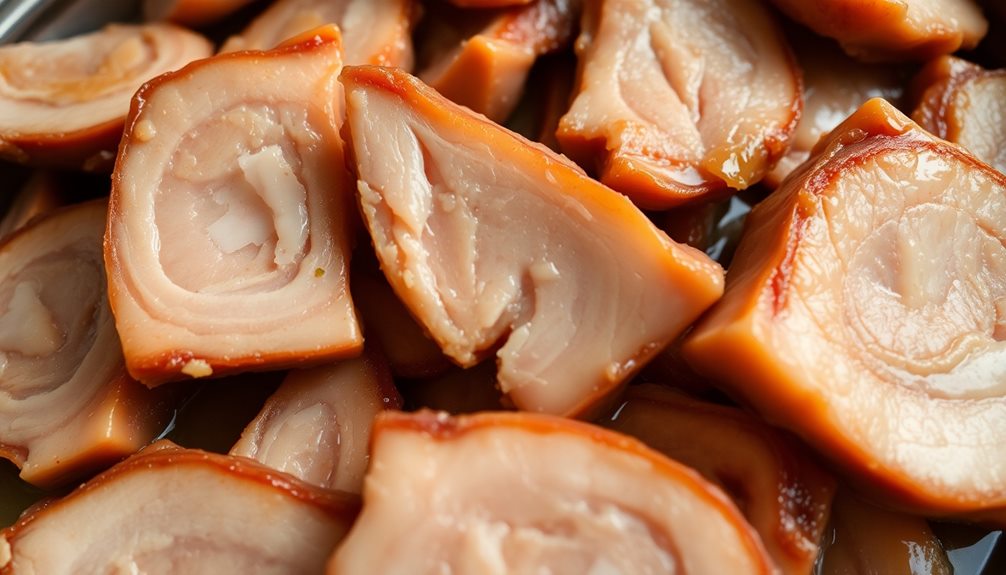
Once the pork hock has been cooked, you'll want to remove the meat from the bone and slice it into bite-sized pieces. This will ensure that the pork is easy to enjoy in your soup. Be sure to discard any bones or tough skin – you only want the tender, flavorful meat.
Now, carefully transfer the sliced pork hock to the pot of broth you prepared earlier. The pork will soak up all the delicious seasonings, adding a wonderful depth of flavor to your soup.
Gently stir the pork into the broth, making sure it's evenly distributed. As the pork heats through, the aroma will start to fill your kitchen, making your mouth water in anticipation.
This is the perfect time to taste the broth and adjust any seasonings as needed. A pinch more salt or a squeeze of lime can really make the flavors pop.
Step 4. Add Sliced Jicama
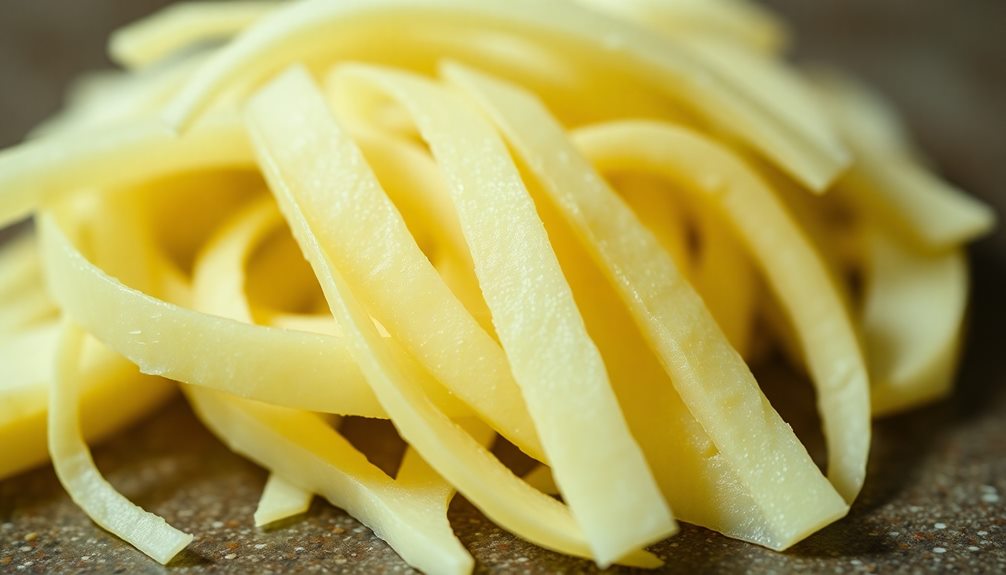
With the tender pork hock now simmering in the aromatic broth, it's time to add another layer of texture and crunch.
Grab a crisp jicama and slice it into thin, bite-sized pieces. Jicama is a root vegetable with a mild, sweet flavor and a wonderfully crunchy texture. It's the perfect complement to the rich, savory broth and the tender pork.
Carefully add the sliced jicama to the simmering soup. The cool, refreshing crunch of the jicama will instantly brighten up the dish, creating a delightful contrast with the warmth of the broth.
As the jicama simmers, it will absorb the flavors of the broth, becoming even more flavorful.
Don't be afraid to add a generous amount of jicama. The more you add, the more textural interest you'll bring to the soup.
The sliced pieces should float atop the broth, adding a playful and inviting appearance to your Vietnamese thick noodle soup.
Step 5. Add Fresh Herbs
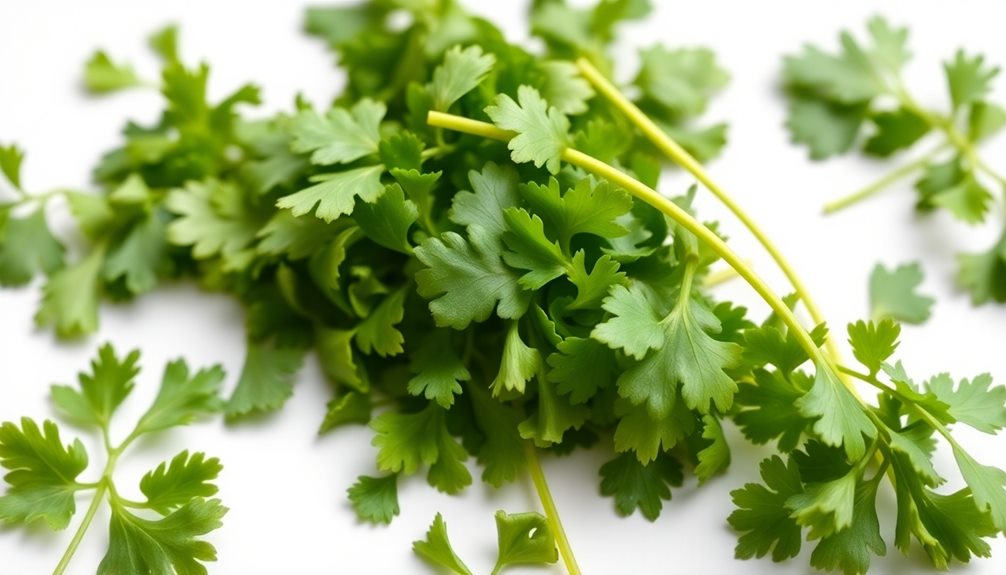
The aroma of the pork broth and the crunch of the jicama now set the stage for the final touches.
It's time to add the fresh herbs! You'll want to gather a handful of fragrant cilantro, some vibrant Thai basil, and a few sprigs of aromatic mint. Roughly chop the herbs and sprinkle them over the top of the steaming soup. The fresh green flavors will dance with the rich pork and complement the chewy noodles perfectly.
Don't be shy – load up your bowl with these herbal gems! The cilantro's zesty notes, the Thai basil's licorice undertones, and the mint's cooling presence will elevate this dish to new heights.
As you take your first sip, the symphony of flavors will awaken your senses. The herbs infuse the broth with their essence, making each spoonful a flavor explosion.
Get ready to savor the perfect balance of savory, sweet, and refreshing in every bite!
Final Thoughts
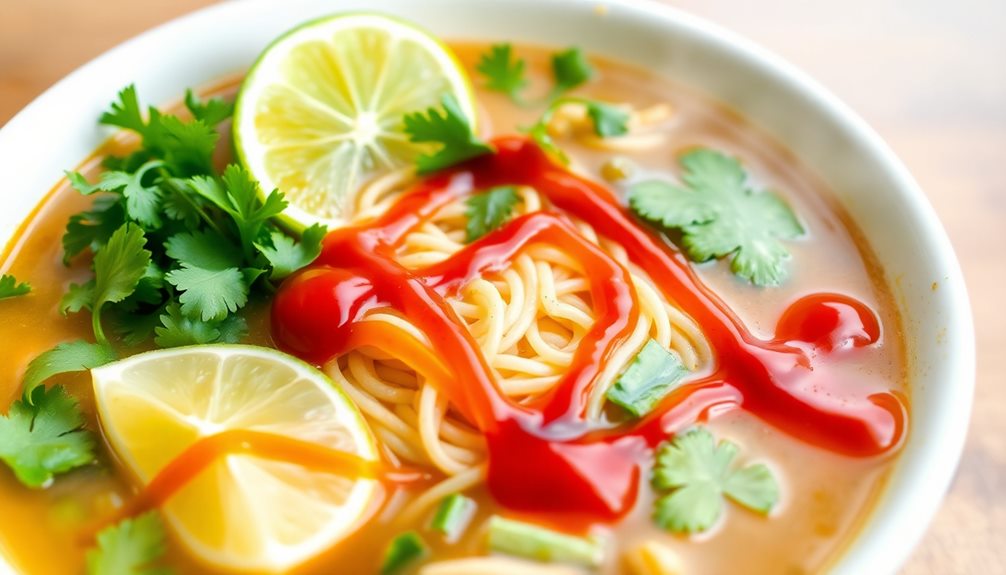
Crafting a satisfying Vietnamese thick noodle soup with pork hock requires a thoughtful approach, as each component plays a crucial role in creating a harmonious dish.
You've already mastered the art of preparing the noodles, simmering the aromatic broth, and adding the tender pork hock. But the final touch? The fresh herbs.
Tearing the fragrant leaves of cilantro, mint, and Thai basil and sprinkling them over the steaming bowl adds a vibrant pop of color and a burst of flavor that elevates the entire dish.
The interplay of the warm, savory broth and the cool, herbaceous notes creates a symphony of tastes that dance on your tongue.
As you savor each slurp, you'll be transported to the bustling streets of Vietnam, where this comforting soup is a beloved staple.
Frequently Asked Questions
What Type of Noodles Are Used in Bánh Canh Giò Heo?
The type of noodles used in this dish are thick, chewy rice noodles. They're the perfect complement to the savory pork hock and broth, creating a hearty and comforting Vietnamese soup.
Can the Recipe Be Adapted for Vegetarians or Vegans?
Absolutely! You can adapt the recipe for vegetarians or vegans by substituting the pork hock with tofu, mushrooms, or other plant-based proteins. Play around with flavors to create a delicious and meat-free version of this classic dish.
How Long Does the Soup Typically Take to Prepare?
The soup typically takes around 2 hours to prepare, depending on the ingredients and cooking method. You'll need to factor in time for preparing the broth, cooking the noodles, and assembling the dish.
Can the Leftover Pork Hock Be Used for Other Dishes?
Absolutely! The leftover pork hock can be repurposed in various ways. You could shred the meat and use it in fried rice, tacos, or even as a protein-packed topping for salads. Get creative and don't let that delicious hock go to waste!
Where Can I Find the Specific Ingredients for This Dish?
To find the ingredients for this dish, you can check your local Asian grocery store or specialty market. They often carry the necessary items, like rice noodles, pork hock, and traditional Vietnamese herbs and spices.

